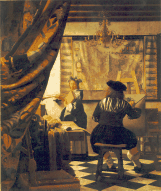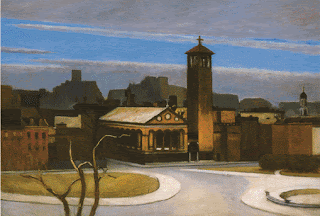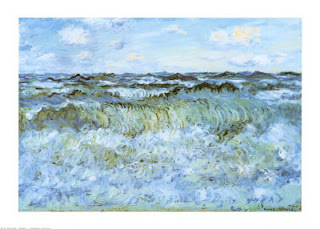As I have read further on creative thinking, two characteristics of creative thinkers that have particularly struck me as interesting are: “a desire to work hard and at the edge of one’s abilities and knowledge” and “a belief in doing something well for the sake of personal pride and integrity.” Both of these characteristics are taken from a list developed by Dr. Craig Roland, referring to studies done by T.M. Amabile and D.N. Perkins in the 1980s. I wonder if these two attributes are necessary in order for a student to have the patience to show other traits on this list, such as:
• a willingness to drop unproductive ideas and temporarily set aside stubborn problems
• a willingness to persist in the face of complexity, difficulty or uncertainty
• a willingness to take risks and expose oneself to failure or criticism
• a desire to do something because it’s interesting or personally challenging to pursue
• an ability to concentrate effort and attention for long periods of time
I have always considered the drive to work hard and learn new skills and information, simply for the pleasure of doing so, to be something that people are born with—some to a greater extent than others. As I have worked in the arts, it has also been very apparent to me that doing something well is very satisfying, whether or not anyone else notices.
How, as an art educator, can I help my students to develop these attitudes? It sometimes feels like when I'm trying to do so I am swimming upstream in a culture that seems to teach kids to need instant gratification, a numerical score for so much of their work, and incentives for doing day-to-day tasks. External motivation is all over the place, and as a result, students seem to expect us to reward them every time they stretch themselves in some way. I also think our schedule-oriented society teaches kids that ‘faster is better.’ There are so many times that I feel like my students are racing against the clock to get their work done, and I struggle with getting them to slow down and really take their time on what they are doing.
One suggestion I have read—and tried—is to give students activities that they find intrinsically motivating. Activities that give students many opportunities to make their own decisions are encouraged. This gives the students more of a sense of ownership about their work.
However, there are some students in my classes who do naturally take their time on every single project, careful to produce pleasing results. For these students, it does not matter what the assignment is, or how many decisions they were allowed to make. These students encourage me, but they also challenge me. Why is it that some students exhibit this tendency so much more consistently than others, regardless of the assignment? Shouldn’t I be able to help all of my students develop such an intrinsic desire to work for a long time in order to achieve high quality work?
At this point, one thing I can focus on is breaking projects down into a series of defined steps. Lately, I have required my students to brainstorm ideas on paper before even starting to draw, using tools such as a web chart. This year I have very often required my students to make sketches before working on a final piece--something that I did not do in my earlier years of teaching. I am also realizing the importance of verbally emphasizing how carefully and slowly I like to work while giving demonstrations in class, hoping students will model this when they engage in their activities.
These are small steps toward what seems to me to be very important goals. They are external, and I can only hope that they will affect my students internally. It is my view that developing desires for quality and intellectual growth within students is key to promoting creative thinking.








